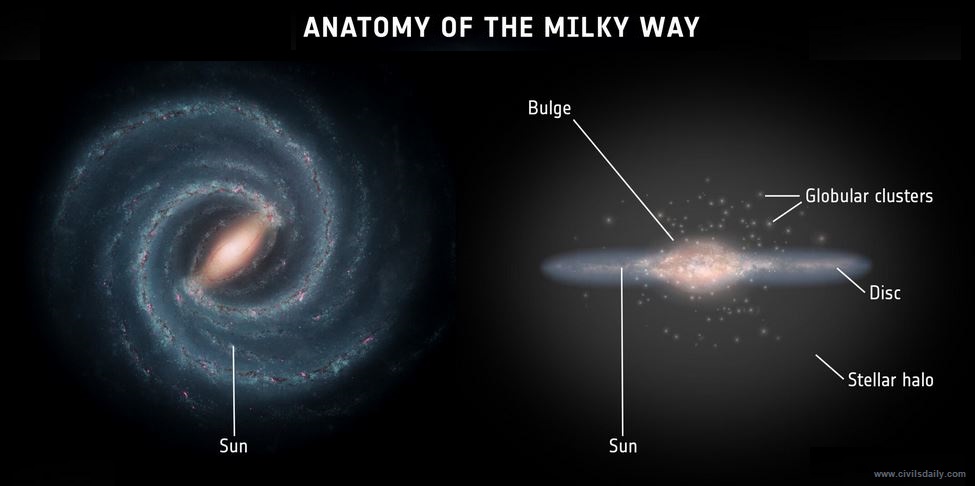Note4Students
From UPSC perspective, the following things are important :
Prelims level: Formation of Universe; Spiral Galaxy.
Why in the News?
A new study has revealed more spiral galaxies in the universe’s youth than astronomers had previously expected.
Universe’s Age and Galaxy Types
- The universe is about 13.8 billion years old and hosts various kinds of galaxies, from spiral to elliptical.
- Astronomers believed spiral galaxies formed about 6 billion years ago, but the new study calls this into question.
- Younger galaxies tend to spiral, while older ones have a variety of shapes, making the study of older galaxies more challenging due to fainter light.
Back2Basics: Spiral Galaxy
Key Characteristics:
Formation and Evolution:
|
Formation of Galaxies
- As the universe cooled from a dense plasma state, hot gas formed clumps that became galaxies.
- These early galaxies had irregular shapes and lacked disks.
- Spiral Formation Theory:
- The traditional theory suggested that it took billions of years for hot, thick disks to become thinner and form spiral arms.
- The new study suggests that cooling and spiral formation occur around the same cosmic time.
How is this verified?
- Astronomers observe star formation in real time but study galaxy evolution through “astronomical archaeology.”
-
- Understanding the fraction of spiral galaxies helps astronomers trace the biography of galaxies.
- Infrared and optical wavelengths are used to detect early galaxies, requiring powerful telescopes due to the faint light of older galaxies.
- James Webb Space Telescope (JWST) launched in 2021 has enabled astronomers to study deeper into the universe’s past.
- Study Methodology:
-
- The University of Missouri team used the JWST to study 873 galaxies and identified at least 216 spiral galaxies, some dating to 1.5 billion years after the universe’s birth.
- Each of the six authors classified the images as spiral or non-spiral, ensuring the result is free of human bias.
Findings and Implications
- The fraction of spiral galaxies increased from about 8% to 48% between 3 billion and 7 billion years after the Big Bang, higher than previously observed.
- The study challenges existing models and suggests that galaxy formation theories need to be more complex.
PYQ:[2022] Launched on 25th December, 2021, James Webb Space Telescope has been much in the news since then. What are its unique features which make it superior to its predecessor Space Telescopes? What are the key goals of this mission? What potential benefits does it hold for the human race? |
Get an IAS/IPS ranker as your 1: 1 personal mentor for UPSC 2024

